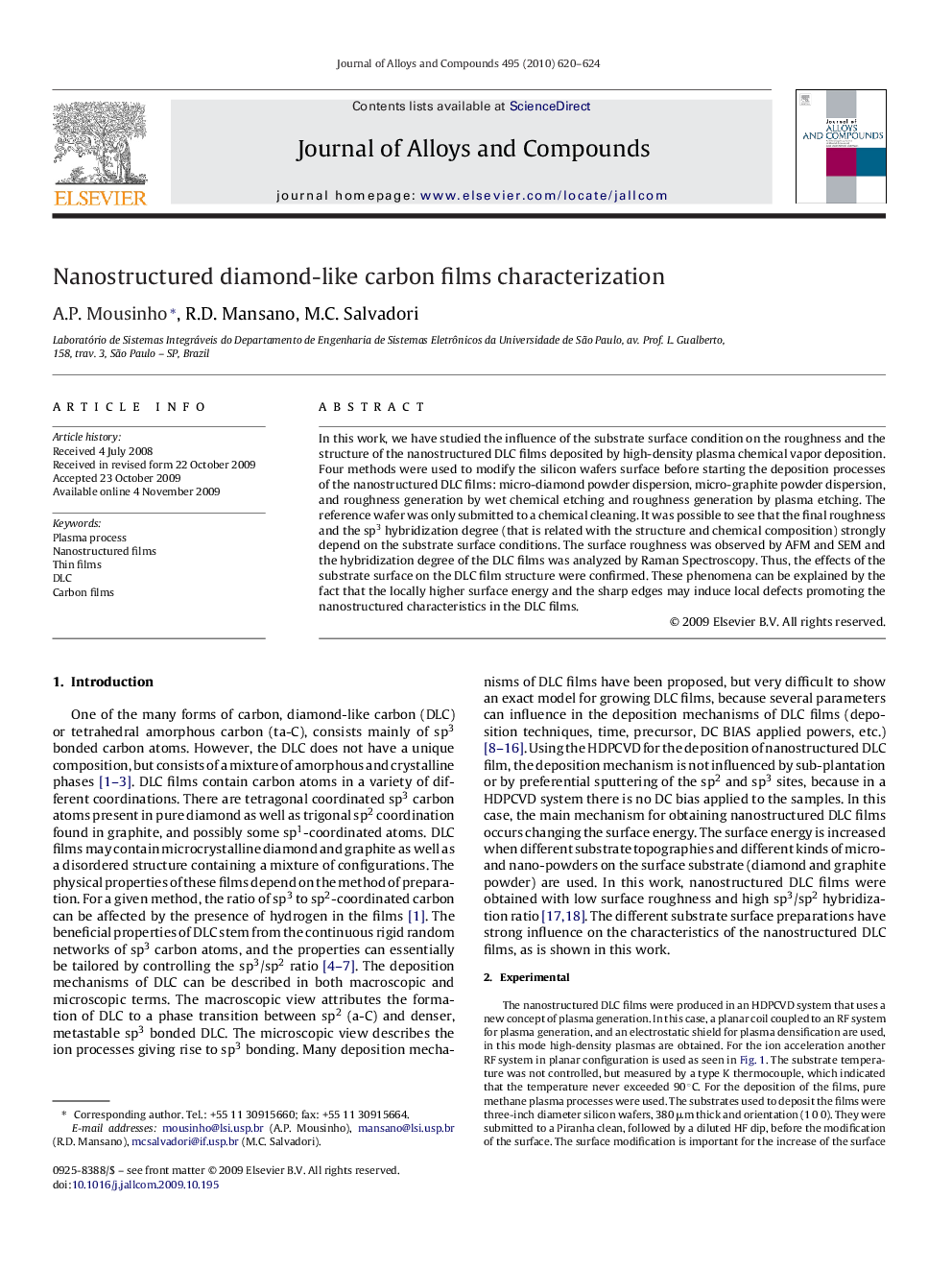| Article ID | Journal | Published Year | Pages | File Type |
|---|---|---|---|---|
| 1621689 | Journal of Alloys and Compounds | 2010 | 5 Pages |
In this work, we have studied the influence of the substrate surface condition on the roughness and the structure of the nanostructured DLC films deposited by high-density plasma chemical vapor deposition. Four methods were used to modify the silicon wafers surface before starting the deposition processes of the nanostructured DLC films: micro-diamond powder dispersion, micro-graphite powder dispersion, and roughness generation by wet chemical etching and roughness generation by plasma etching. The reference wafer was only submitted to a chemical cleaning. It was possible to see that the final roughness and the sp3 hybridization degree (that is related with the structure and chemical composition) strongly depend on the substrate surface conditions. The surface roughness was observed by AFM and SEM and the hybridization degree of the DLC films was analyzed by Raman Spectroscopy. Thus, the effects of the substrate surface on the DLC film structure were confirmed. These phenomena can be explained by the fact that the locally higher surface energy and the sharp edges may induce local defects promoting the nanostructured characteristics in the DLC films.
